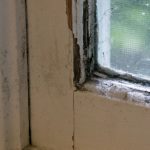What Causes Timber Decay In Devon?
If you own an older property, you have probably had an encounter with timber decay. Discovering that your woodwork is being eaten away by rot or wood beetles is never good news! In many cases, homeowners’ resort to drastic measures to restore their homes health. And in truth, the use of heavy-duty chemicals, insecticides and preservatives aren’t the best solution – you need timber treatment.
Before you shell out handfuls of cash for a quick fix, it may be worth paying a small fee to have a specialist survey the timber to accurately diagnose the problems in your building – and prescribe a more reasonable solution.
With that being said, here are the top three causes of decaying woodwork.
What Is Wet Rot
The most common cause of timber decay is wet rot, where the damp becomes embedded in the woodwork due to prolonged exposure to wetness/moisture. A lack of ventilation is a key accelerant of wet rot, and if there are any places ion your home suffering from standing water – they need to be inspected. Windowsills (inside & out), floorboards embedded in damp walls and window frames are particularly vulnerable to rot. It is therefore vital you keep an eye on these during the colder months.
How Serious Is Wet Rot
The majority of the time, the wet rot in the woodwork will disappear if the moisture levels are brought back down. It is then advised to treat the affected wood with a new specialised resin to harden it back up. However, in stubborn circumstances, the affected wood may need to be cut out and a new pieced spliced in. Only in severe cases is your building at risk from permanent structural damage.
What Is Dry Rot
Serpula lacrymans fungus is the technical name for dry rot. It is a considerably more sinister problem in the home. Airborne spores of the fungus settle on damp timbers within a building and suck the moisture out until its dry, crusted and crumbling.
To catch dry rot in its early stages, look out for wood or paintwork cracking in a square-shaped pattern, with grey web-like roots spreading across the surface. Eventually this webbing will turn into a flat fruiting body, emitting spores into their air – increasing the severity of the problem.
How Serious Is Dry Rot
If dry rot is spotted and treated quickly, it can be tackled without too much trouble. However, its ability to spready through building can escalate the severity quickly. An accurate cost for remedial work will often require the full extent of the damage to be inspected prior.
Identifying the source of the damp should prevent the fungus from germinating, as it ultimately dries it out and kills it off. It is vital that you improve the ventilation in rooms affected by dry rot (dehumidifier can help), and make sure to properly fix the root of the moisture. However, if the rot has extensively spread, badly damaging timber and structure – it may have to be removed by specialists, and replaced with protective treatment
What Is Wood Beetle Infestation
Wood beetle infestation can often be identified by the presence of bore holes in beams, floorboards, behind timber panelling ad around loft hatches. You will most likely notice a cluster of boreholes (rather than just one or two) usually 1mm in diameter created by wood beetles. They lay eggs inside the wood and the larvae later tunnel through to the surface.
How Serious Is Beetle Infestation
Wood beetles only pose a threat when the timber is truly suffering from a particularly high moisture content. Damp will also allow the wood to become softer and more accommodating for a beetle infestation which weakens the timber further. Addressing he source of the damp will start to solve the problem, whilst reducing the moisture content of the timber will make it gradually inhabitable for the beetle colony.
Timber Treatment Specialists Devon
If you need timber treatment specialists in Devon, contact Orchard Preservations. We use our team of experts to guarantee a friendly and efficient servicer with outstanding results. Our broad range of expertise means that whenever you need building works or damp specialists in the South West, you will know that Orchard Preservations can help.




